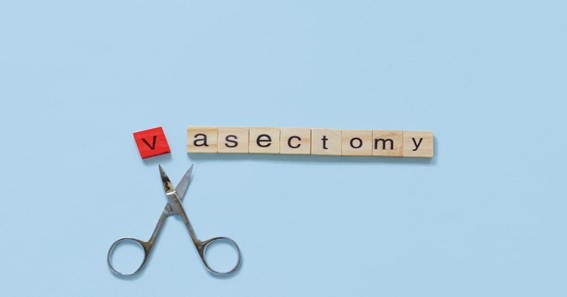Vasectomy is a widely recognised contraceptive method that offers a permanent solution for men. It involves the surgical procedure of blocking or cutting the vas deferens, preventing sperm from reaching the semen.
Traditionally, vasectomies were performed through incisions in the scrotum, but now a no-scalpel technique has emerged as an alternative. This innovative approach minimises scarring and complications, making the procedure less invasive and more efficient.
This article will explore traditional and no-scalpel vasectomy methods to determine if the latter is as effective as the former.
Table of Content:
- Understanding The Concept Of Traditional Vasectomy
- Introducing No-Scalpel Vasectomy
- Comparing The Effectiveness and Safety of Traditional and No-Scalpel Vasectomy
- Let’s Talk About Patient Experience During A Traditional Vasectomy
- Exploring The Patient Experience During A No-Scalpel Vasectomy
- Factors to Consider When Choosing a Vasectomy Method
- Final Words
Understanding The Concept Of Traditional Vasectomy
Traditional vasectomy is a surgical procedure that helps men prevent pregnancy permanently. It involves making small incisions in the scrotum to access and cut the vas deferens, the tubes that carry sperm.
Don’t worry; it’s done under anesthesia so that you won’t feel any pain.
This method has been around for a while and has helped countless individuals take control of their reproductive choices. Let’s dive deeper into this fascinating contraceptive method!
Introducing No-Scalpel Vasectomy
No-scalpel vasectomy in Sydney and worldwide is a modern and less invasive way for men to achieve permanent contraception. Unlike traditional vasectomy, there are no incisions involved.
Instead, a special instrument creates a tiny puncture in the scrotum, allowing access to the vas deferens. This technique reduces discomfort, bleeding, and healing time, making it a popular choice for those seeking a hassle-free solution.
Comparing The Effectiveness and Safety of Traditional and No-Scalpel Vasectomy
| Traditional Vasectomy | No-Scalpel Vasectomy | |
| Effectiveness | Highly effective
(over 99% success rate) |
Highly effective
(over 99% success rate) |
| Procedure | Incisions in scrotum | Puncture in scrotum |
| Scarring | Minor scarring | Minimal scarring |
| Complications | Potential for bleeding, infection, swelling, and discomfort | Reduced risk of complications, such as bleeding, infection, swelling, and discomfort |
| Healing Time | Longer healing time | Faster healing time |
| Anesthesia | Typically requires local anesthesia or general anesthesia | Typically requires local anesthesia or general anesthesia |
| Recovery | Longer recovery period | Shorter recovery period |
| Sexual Function | No impact on sexual function | No impact on sexual function |
Let’s Talk About Patient Experience During A Traditional Vasectomy
During a traditional vasectomy in Sydney, here’s what the patient experiences:
- Local anesthetic is administered to the skin of the scrotum to ensure a pain-free procedure.
- Small incisions are made in the skin of the scrotum, allowing access to the vas deferens.
- The vas deferens, the tubes carrying sperm, are cut, and the ends are sealed using cauterisation to prevent sperm from passing through.
- The incisions in the scrotum are closed using stitches, promoting proper healing and closure of the surgical site.
Exploring The Patient Experience During A No-Scalpel Vasectomy
- Local anesthetic is administered to the skin of the scrotum to ensure a pain-free procedure.
- Instead of making an incision in the scrotum, the doctor uses a specialised instrument that resembles forceps to make a small puncture in the skin. This puncture is made with precision and care.
- The skin is gently stretched to expose the vas deferens, the tubes carrying sperm.
- The vas deferens are severed, and the ends are sealed using cauterisation to prevent sperm from passing through.
- The puncture made during the procedure closes immediately, without stitches. This closure occurs naturally, allowing for a more convenient and comfortable recovery process.
In a no-scalpel vasectomy in Sydney, using a puncture instead of an incision contributes to a faster healing time, minimal scarring, and a reduced risk of complications. It’s an innovative technique that offers a less invasive and more efficient experience for patients in Sydney.
Factors to Consider When Choosing a Vasectomy Method
Personal Preferences And Concerns
When deciding on a vasectomy method in Sydney, personal preferences and concerns play a vital role. You may have specific choices regarding the procedure’s invasiveness, such as avoiding incisions.
It’s important to discuss any concerns or preferences with a healthcare professional to ensure the chosen method aligns with individual needs.
The Cost And Availability Of Each Procedure
Cost and availability are also essential factors to consider. Traditional vasectomy and no-scalpel vasectomy may vary in cost, depending on factors like the healthcare provider and location.
It’s recommended to inquire about the cost and availability of each procedure at different clinics or healthcare facilities in Sydney to make an informed decision based on one’s financial situation.
Potential Long-Term Effects And Reversibility
Potential long-term effects and reversibility are crucial aspects to think about. Both traditional and no-scalpel vasectomy are considered permanent contraceptive methods.
However, individuals who desire the possibility of future reversal should consider that vasectomy reversal procedures may not always be successful or readily available.
It’s essential to clearly understand the long-term effects and implications of choosing a permanent contraceptive method.
Final Words
When deciding between traditional vasectomy and no-scalpel vasectomy in Sydney, seeking personalised advice from a healthcare professional is essential.
They can address specific concerns, provide accurate information, and guide you in making an informed decision. So, don’t hesitate to schedule a consultation and start a conversation that helps you to choose the best option for your reproductive choices.
Your healthcare provider is there to support you every step of the way.

